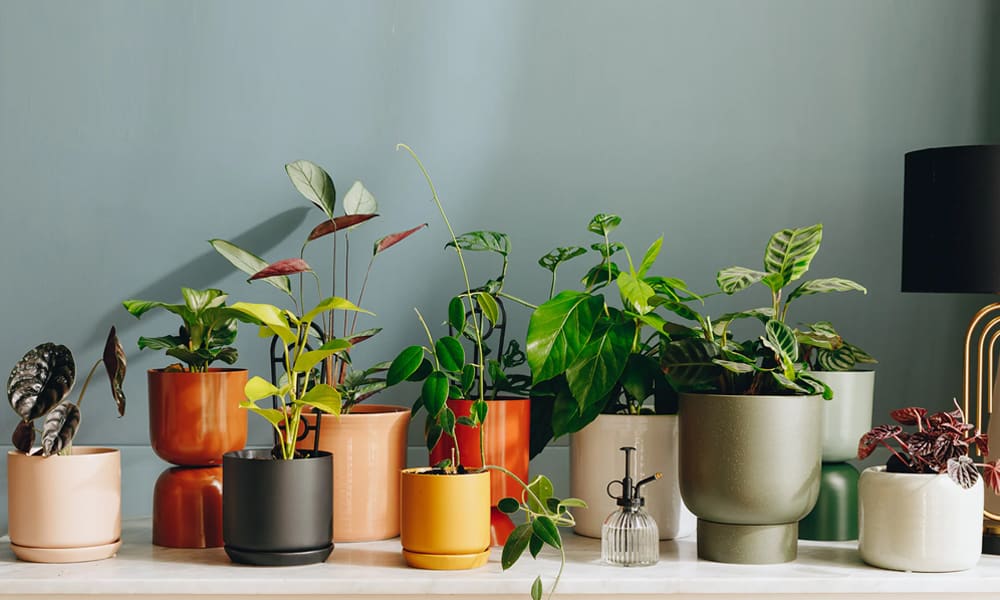
Container gardening is a flourishing trend in the world of horticulture, offering a versatile and creative approach to growing plants in various spaces. Whether you’re a seasoned gardener or a beginner, understanding the art of selecting the right plant containers is key to a successful container garden. This comprehensive guide will explore the myriad aspects of container gardening, ensuring you make informed decisions when choosing plant containers for every space. Container gardening is the practice of growing plants, including flowers, herbs, vegetables, and ornamental plants, in containers instead of planting them in the ground. This method is ideal for those with limited space, such as urban dwellers, or for adding versatility to gardens of any size. Versatility in Design: Containers can be moved around to change the look of a space. Accessibility: Ideal for individuals with mobility issues, as containers can be placed at convenient heights. Soil Control: Allows for complete control over the soil and nutrient mix, benefiting plant health. Pest Management: Easier to manage pests and diseases compared to traditional gardening. The material of a plant container plays a crucial role in the health of the plants and the aesthetics of the garden. Terracotta: Breathable and classic, but can be heavy and fragile. Plastic: Lightweight, affordable, but not as durable or environmentally friendly. Metal: Stylish and durable, though it can heat up in the sun, affecting root health. Wood: Natural look, good insulation, but may rot over time. Composite Materials: A blend of organic and inorganic materials, offering durability and style. Depth: Deep containers for deep-rooted plants like tomatoes, shallower for herbs. Width: Wider containers for spreading plants, and for stability in windy conditions. Drainage Holes: Essential for preventing waterlogging and root rot. The style and color of containers should complement the environment they’re placed in. Consider: Color Coordination: Matching or contrasting colors with the surrounding area. Design Theme: Modern, rustic, or eclectic, the container style should align with the overall design theme. Weight: Heavier containers for stability, lighter ones for portability. Insulation: Certain materials insulate roots better from temperature fluctuations. Maintenance: Some materials require more maintenance, like wood, which may need regular sealing. The right soil mix is crucial in container gardening. It should be: Well-Draining: To prevent waterlogging. Nutrient-Rich: As container plants have limited soil, regular fertilization might be necessary. Understanding the watering needs of your plants is vital. Containers dry out faster than ground soil, so more frequent watering may be needed. Think outside the box with container choices: Recycled Containers: Old boots, barrels, or kitchen items. Hanging Baskets: Great for small spaces and adding vertical interest. Window Boxes: Ideal for herbs and flowers, adding charm to windows. Create themed gardens in containers: Herb Garden: A collection of culinary herbs in one large container. Tropical Paradise: Grouping tropical plants together for a lush look. Succulent Display: A variety of succulents in a shallow, wide container. Some common challenges include: Over/Under Watering: Monitoring soil moisture is key. Limited Root Space: Regular repotting or root pruning may be necessary. Nutrient Depletion: Regular fertilization is essential. In colder climates, consider: Insulating Containers: Protecting roots from freezing. Indoor Transfer: Moving some containers indoors during harsh winters. Container gardening with the right plant containers offers endless possibilities, allowing gardeners to express their creativity, maximize small spaces, and enjoy the therapeutic benefits of gardening. By understanding the basics of container selection, plant care, and innovative approaches, anyone can create a thriving garden in any space. Remember, the key to successful container gardening lies in choosing the right plant containers, understanding the needs of your plants, and embracing the flexibility and creativity that container gardening offers. Whether you have a small balcony, a large patio, or just a windowsill, container gardening is a delightful way to bring more greenery into your life.The Essence of Container Gardening
Understanding Container Gardening
Benefits of Container Gardening
Choosing the Right Plant Containers
Material Matters in Plant Containers
Size and Shape Considerations
Aesthetics and Functionality in Container Selection
Complementing Your Space with Plant Containers
Practical Aspects
Maximizing Plant Health in Containers
Soil and Nutrient Management
Watering and Drainage
Innovative Ideas for Container Gardening
Creative Container Solutions
Themed Container Gardens
Overcoming Challenges in Container Gardening
Addressing Common Issues
Winter Care for Containers
Conclusion: The Infinite Possibilities of Container Gardening
